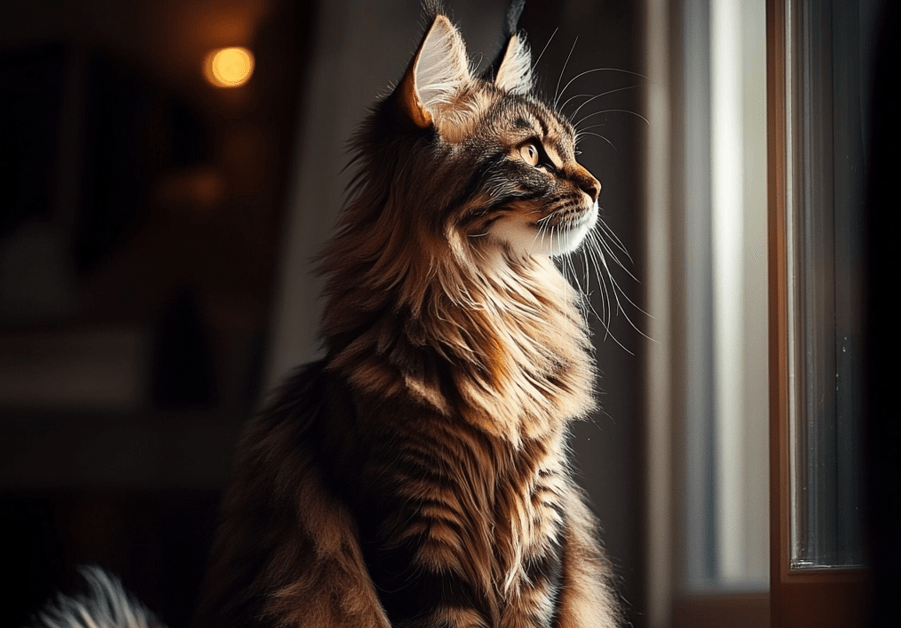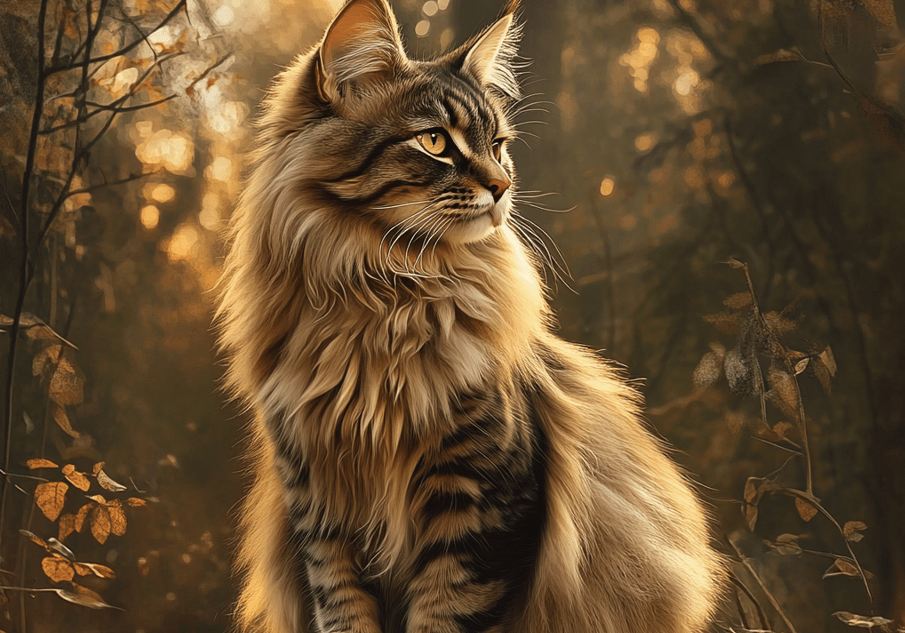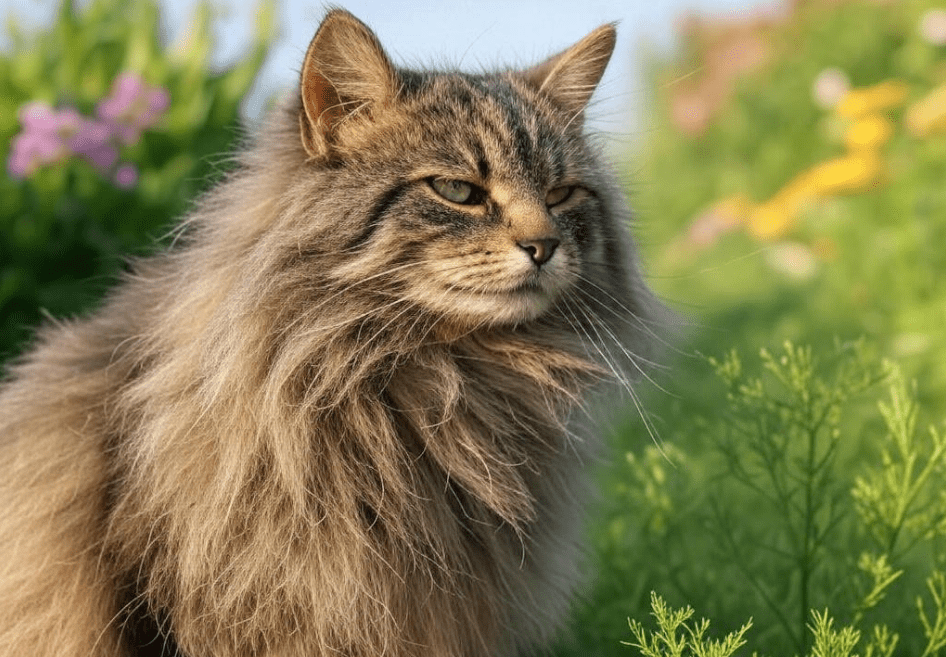
Maine Coon cats, known for their large size, tufted ears, and friendly personalities, are one of the most beloved cat breeds. These gentle giants are often described as dog-like due to their sociable nature and adaptability, making them excellent candidates for leash training. Training your Maine Coon to walk on a leash can enrich their life, providing mental stimulation, exercise, and a chance to explore the outdoors safely. This comprehensive guide will walk you through every step of leash training, ensuring both you and your Maine Coon have a rewarding experience.
Leash training a Maine Coon is not only feasible but also a fantastic way to bond with your feline friend. However, it requires patience, consistency, and an understanding of your cat’s unique temperament. In this article, we’ll cover everything from choosing the right equipment to troubleshooting common challenges, offering practical tips and expert insights to make the process smooth and enjoyable.
Why Leash Train a Maine Coon?
Maine Coons are naturally curious and intelligent, traits that make them ideal for leash training. Unlike many other cat breeds, Maine Coons often enjoy outdoor adventures and may take to leash walking with enthusiasm. Here are some key benefits of leash training your Maine Coon:
Physical Exercise: Maine Coons are large, active cats that benefit from regular physical activity to maintain a healthy weight.
Mental Stimulation: Exploring new environments engages their senses and keeps their minds sharp.
Safe Outdoor Exploration: Leash training allows your cat to enjoy the outdoors without the risks of roaming free, such as traffic, predators, or getting lost.
Strengthened Bond: Training sessions and walks provide quality time to deepen your connection with your Maine Coon.
Before diving into the training process, it’s essential to understand your Maine Coon’s personality. These cats are generally sociable and trainable, but each one is an individual. Some may take to leash walking quickly, while others may need more time to adjust.
Step-by-Step Guide to Leash Training Your Maine Coon
Leash training a Maine Coon involves gradual steps to ensure your cat feels comfortable and confident. Rushing the process can lead to stress or resistance, so take your time and celebrate small victories. Below is a detailed, step-by-step guide to help you train your Maine Coon to walk on a leash safely.
Step 1: Choose the Right Equipment
Selecting the appropriate gear is critical for a successful leash training experience. Maine Coons are larger than most cats, so you’ll need equipment designed for their size and strength.
Harness: Opt for a cat-specific harness rather than a collar. A harness distributes pressure evenly across your cat’s body, reducing the risk of injury. Look for an adjustable, padded harness that fits snugly but allows room for movement. Popular options include the “H-style” or “vest-style” harnesses.
Tip: Measure your Maine Coon’s chest and neck to ensure a proper fit. The harness should be snug but allow you to slip two fingers underneath.
Leash: Choose a lightweight, 4- to 6-foot leash. Avoid retractable leashes, as they can be difficult to control and may encourage pulling.
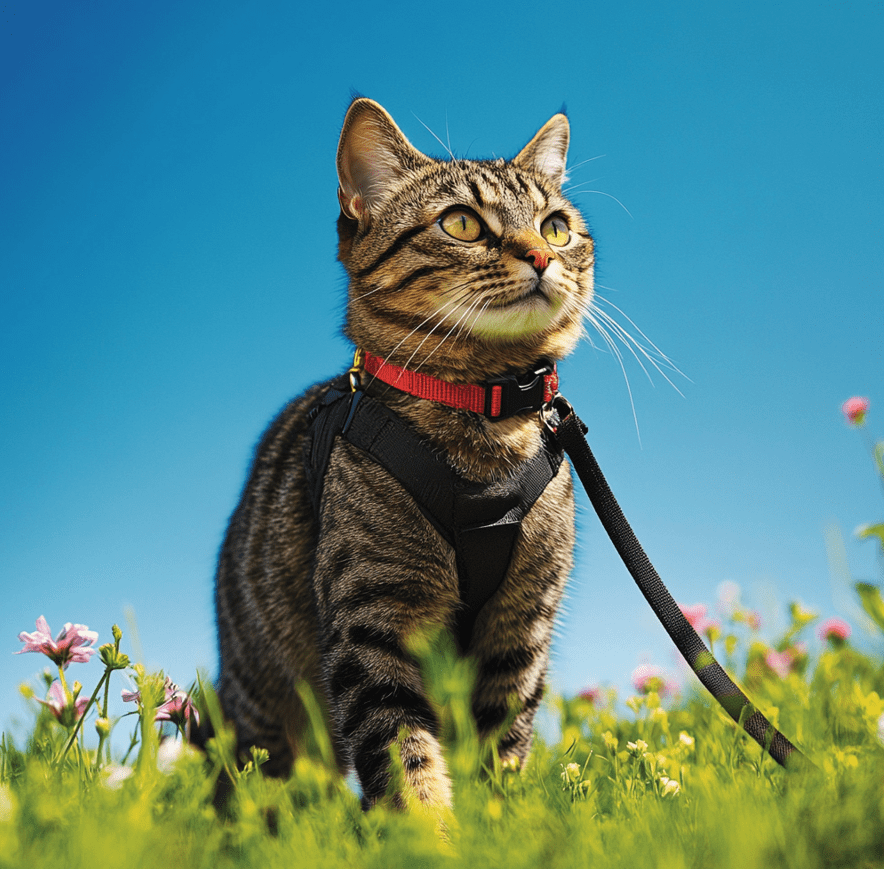
ID Tags: Attach identification tags to the harness with your contact information in case your cat slips away.
Treats and Toys: High-value treats (like freeze-dried chicken or tuna) and favorite toys will motivate your Maine Coon during training.
Step 2: Introduce the Harness Indoors
Before heading outside, your Maine Coon needs to get comfortable wearing the harness. Follow these steps to introduce it gradually:
Let Your Cat Explore the Harness: Place the harness near your cat’s favorite spot and let them sniff it. Reward curiosity with treats to create a positive association.
Practice Putting It On: Once your cat is comfortable, gently slip the harness on for a few seconds, rewarding them with treats and praise. Remove it before they become agitated.
Increase Wear Time: Gradually extend the time your cat wears the harness, starting with a few minutes and working up to 10–15 minutes. Encourage play or offer treats to keep the experience positive.
Add the Leash: Attach the leash and let it drag behind your cat indoors. Supervise closely to prevent tangling. Reward your cat for moving with the leash attached.
Pro Tip: If your Maine Coon resists the harness, try placing it near their food bowl during meals to build familiarity. Never force the harness on, as this can create negative associations.
Step 3: Practice Indoors
Once your Maine Coon is comfortable wearing the harness and leash, practice walking indoors. This controlled environment helps your cat get used to the sensation of being guided.
Hold the Leash Lightly: Keep the leash loose and follow your cat’s movements rather than pulling. Reward them for walking with you.
Use Treats to Guide: Hold a treat or toy in front of your cat to encourage them to move forward. Reward small steps toward you.
Introduce Gentle Guidance: Gradually apply light pressure to the leash to guide your cat in different directions. Reward compliance immediately.
Be patient during this stage. Maine Coons are intelligent but may take time to understand what you’re asking. Keep sessions short (5–10 minutes) and end on a positive note.
Step 4: Transition to the Outdoors
When your Maine Coon is confident walking indoors, it’s time to venture outside. Start in a quiet, familiar area, such as your backyard or a low-traffic park.
Choose the Right Time: Pick a calm time of day, avoiding noisy periods like rush hour or when dogs are likely to be around.
Start Small: Let your cat explore a small area at their own pace. Keep the leash loose and follow their lead.
Watch for Stress Signals: Signs of stress include flattened ears, a tucked tail, or crouching. If your cat seems overwhelmed, return indoors and try again later.
Reward Exploration: Praise and treat your cat for sniffing, walking, or showing curiosity. This reinforces the idea that the outdoors is a fun place.
Safety Note: Always supervise your Maine Coon closely outdoors. Carry a pet carrier or have a safe retreat nearby in case of unexpected disturbances.
Step 5: Build Confidence and Routine
As your Maine Coon becomes more comfortable, gradually increase the duration and distance of your walks. Introduce new environments, such as different parks or quiet streets, to keep things interesting.
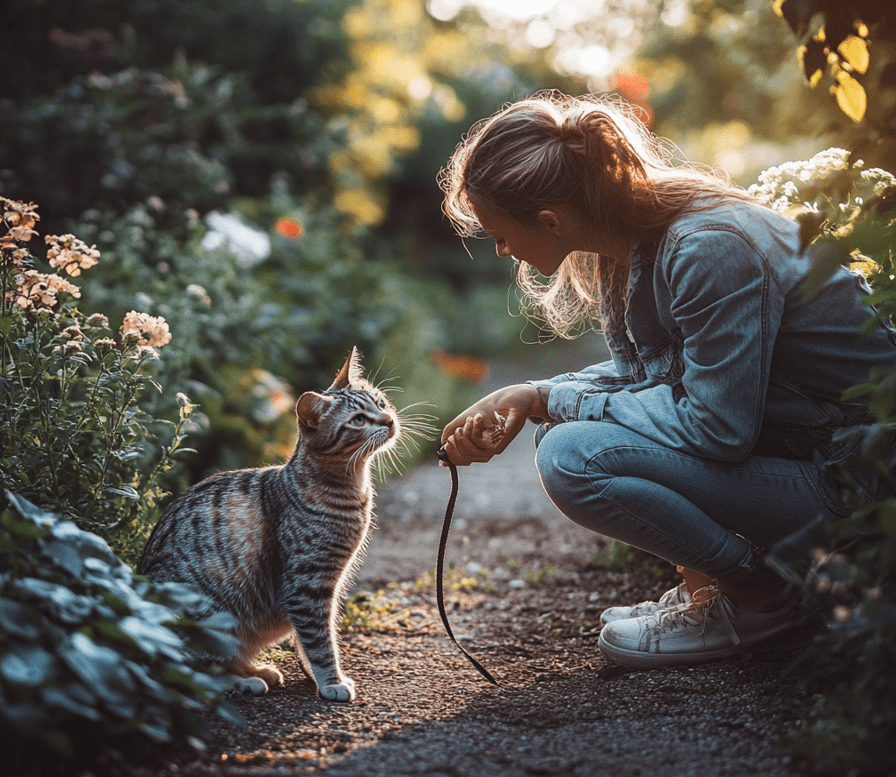
Vary the Routes: Maine Coons thrive on mental stimulation, so changing up your walking paths prevents boredom.
Practice Commands: Teach simple cues like “come” or “stop” using treats and consistent verbal signals. This enhances safety and control.
Monitor Body Language: Continue to watch for signs of discomfort or overstimulation. If your cat seems tired or stressed, end the walk early.
Consistency is key. Aim for short, frequent walks (10–20 minutes) several times a week to build a routine your Maine Coon looks forward to.
Tips for Success
Leash training a Maine Coon is a journey that requires adaptability and patience. Here are additional tips to ensure success:
Use Positive Reinforcement: Always reward desired behaviors with treats, praise, or play. Avoid scolding or punishing, as this can make your cat fearful.
Keep Sessions Fun: Incorporate playtime or exploration into walks to keep your Maine Coon engaged.
Be Patient: Every cat progresses at their own pace. Some Maine Coons may take weeks or months to fully embrace leash walking.
Stay Calm: Your cat will pick up on your emotions. Stay relaxed and confident to help them feel secure.
Consult a Vet: Before starting leash training, ensure your Maine Coon is healthy and up-to-date on vaccinations and parasite prevention.
Common Challenges and How to Overcome Them
Even with the best approach, you may encounter challenges. Here’s how to address common issues:
Resistance to the Harness
If your Maine Coon dislikes the harness, go back to basics. Leave the harness out for them to explore, and use treats to create positive associations. Try a different harness style if the current one seems uncomfortable.
Pulling on the Leash
Maine Coons are strong, and pulling can be an issue. If your cat pulls, stop walking and wait for them to return to you. Reward them for walking with a loose leash. Avoid yanking the leash, as this can cause stress or injury.
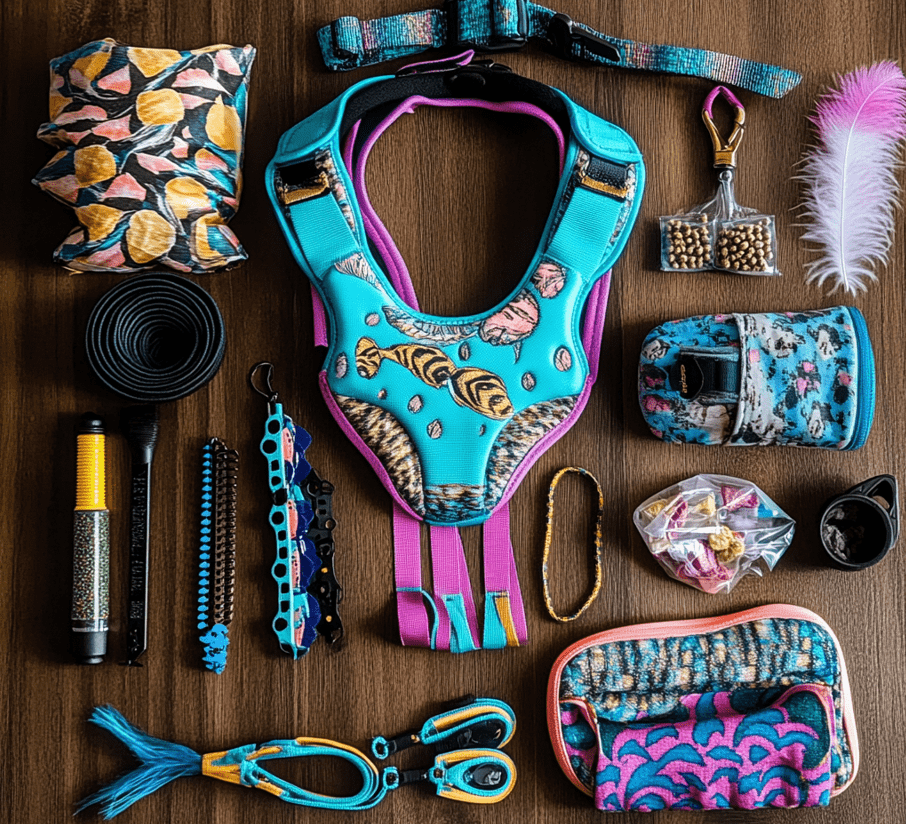
Fear of the Outdoors
Some Maine Coons may be hesitant about outdoor noises or unfamiliar environments. Start with brief outdoor sessions in a quiet area, and gradually increase exposure. Bring familiar items, like a favorite blanket, to provide comfort.
Distractions
Outdoor walks are full of distractions, from birds to passing cars. Keep treats handy to redirect your cat’s attention. If they fixate on something, gently guide them away and reward focus on you.
Safety Considerations
Safety is paramount when leash training a Maine Coon. Follow these guidelines to protect your cat:
Check the Harness Regularly: Ensure the harness fits properly and isn’t fraying or loosening over time.
Avoid Busy Areas: Steer clear of crowded places, loud noises, or areas with unleashed dogs.
Use Flea and Tick Prevention: Outdoor exposure increases the risk of parasites. Consult your vet for appropriate preventatives.
Carry Supplies: Bring water, treats, a pet carrier, and a first-aid kit for emergencies.
Monitor Weather: Avoid walking in extreme heat, cold, or rain, as Maine Coons are sensitive to temperature changes.
Why Maine Coons Are Unique for Leash Training
Maine Coons stand out as a breed due to their dog-like traits, making them particularly suited for leash training. Their intelligence allows them to learn commands and routines quickly, while their sociable nature means they often enjoy human interaction during walks. Additionally, their large size and sturdy build make them more comfortable in harnesses compared to smaller, more delicate breeds.
However, Maine Coons also have unique needs. Their long, thick fur requires regular grooming to prevent matting, especially after outdoor adventures. They may also be more prone to joint issues due to their size, so avoid overexertion during walks.
Advanced Leash Training Techniques
Once your Maine Coon is comfortable with basic leash walking, you can introduce advanced techniques to enhance the experience:
Teach Directional Cues: Use treats to teach your cat to turn left, right, or stop on command. This improves control in complex environments.
Introduce Obstacles: Encourage your cat to navigate low obstacles, like steps or logs, to build confidence and coordination.
Socialize Gradually: If your Maine Coon is comfortable, introduce them to calm, leashed dogs or other leash-trained cats during walks.
Conclusion

Training your Maine Coon to walk on a leash is a rewarding endeavor that enhances their quality of life and strengthens your bond. By choosing the right equipment, proceeding gradually, and using positive reinforcement, you can help your Maine Coon become a confident leash walker. Patience and consistency are key, as every cat learns at their own pace.
With this comprehensive guide, you’re equipped with everything you need to make leash training a success. From selecting the perfect harness to troubleshooting challenges, you now have the tools to create safe, enjoyable outdoor adventures for your Maine Coon. So grab a leash, harness up, and start exploring the world together—your Maine Coon will thank you for it!

